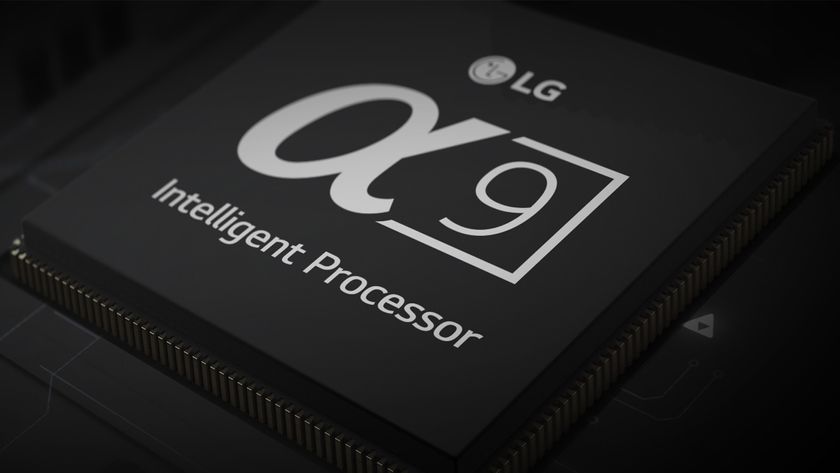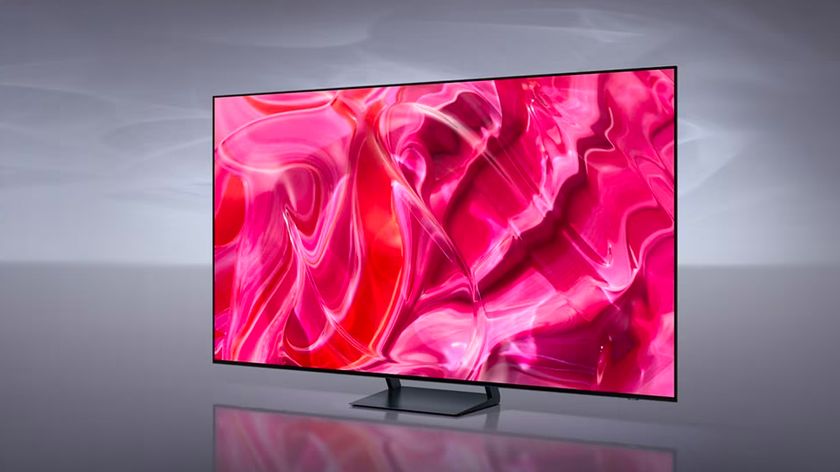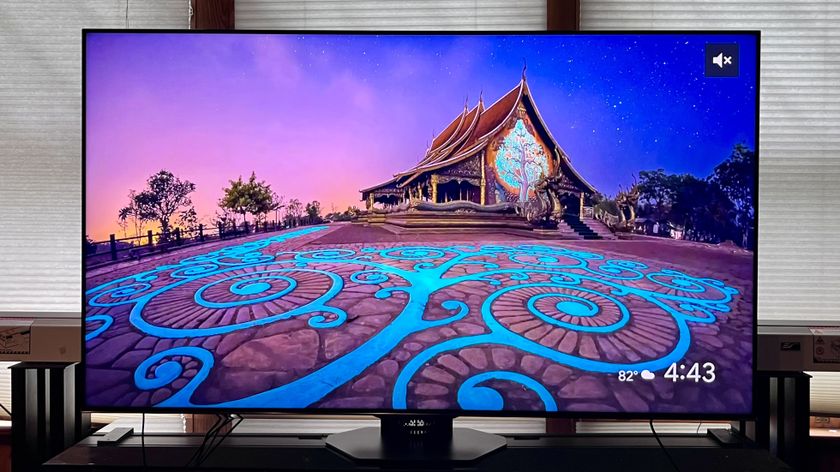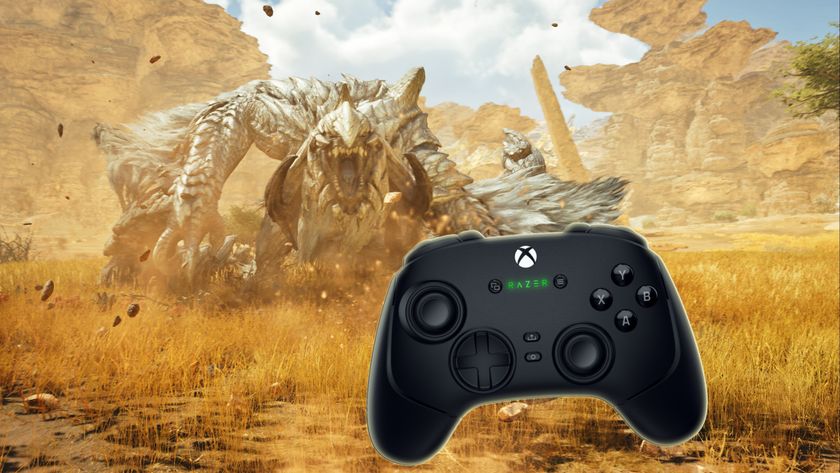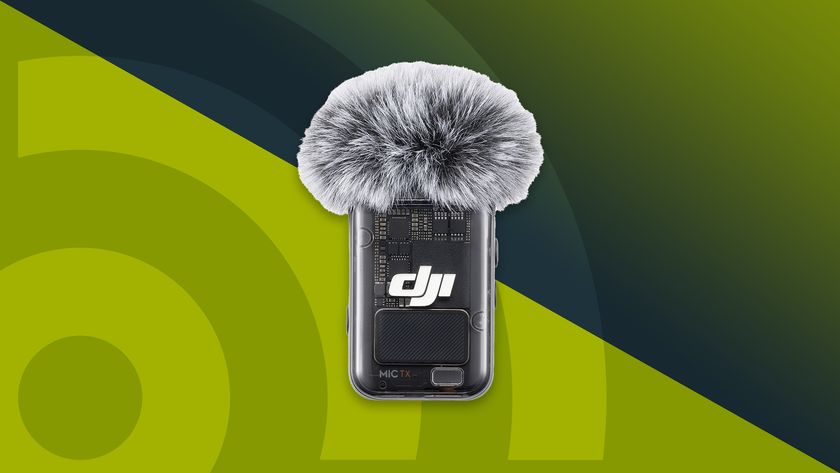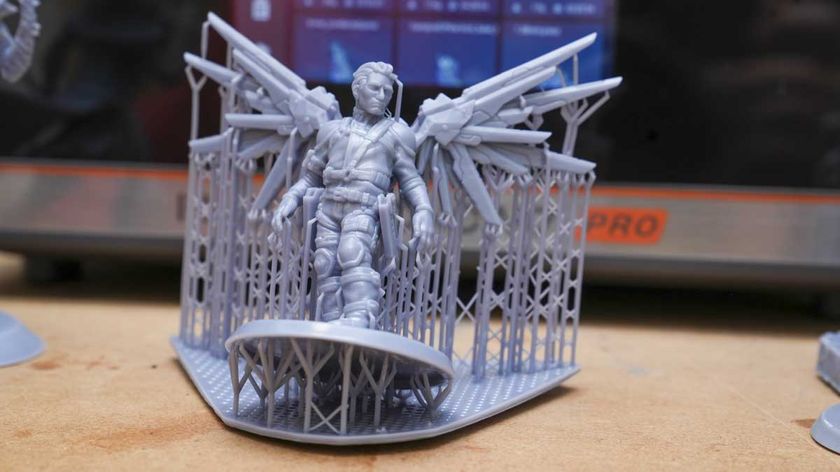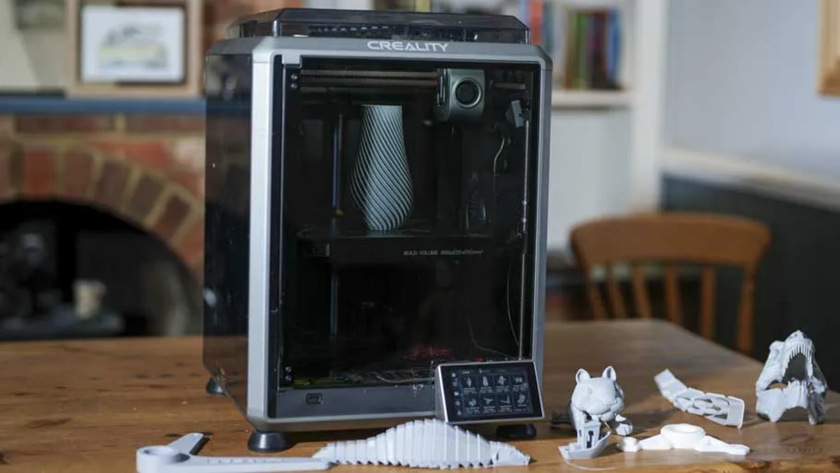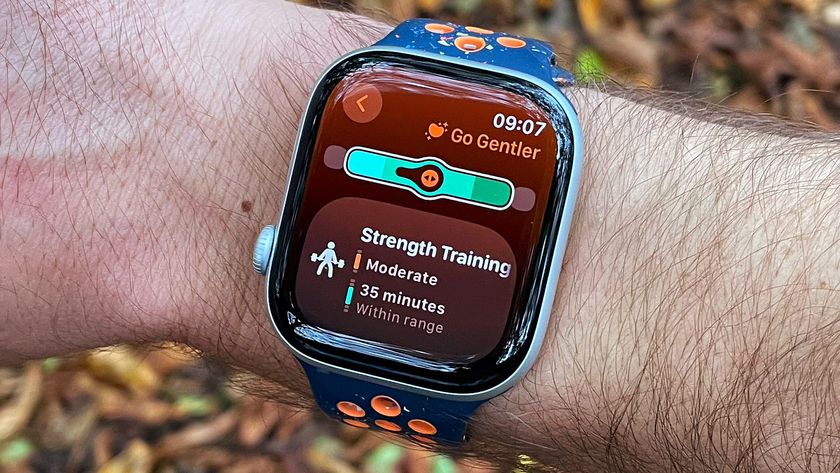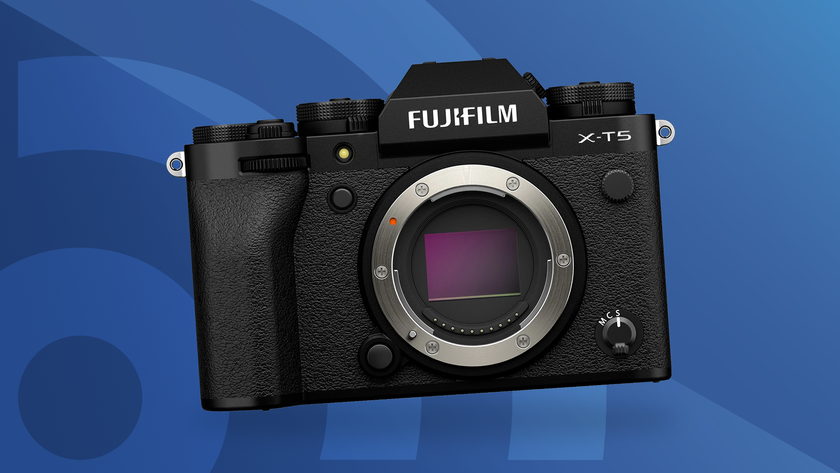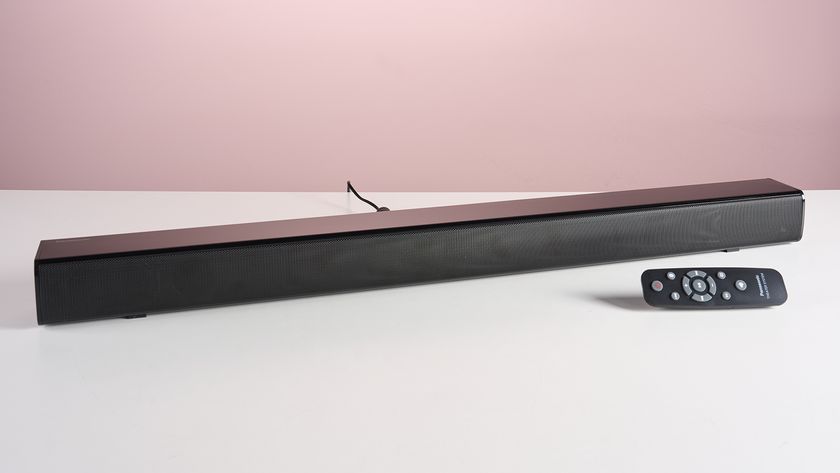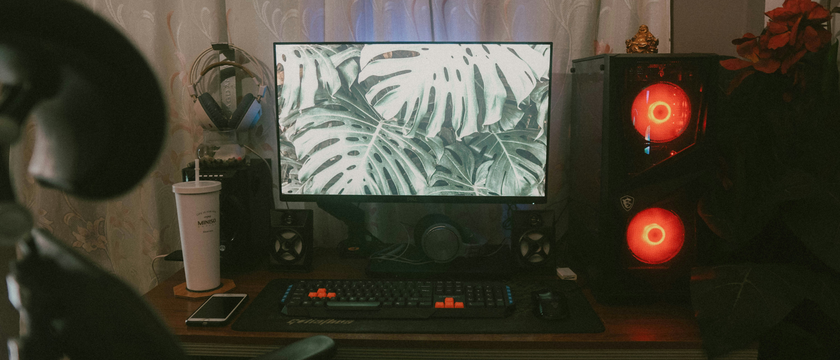Best wall-mount TVs: screens worthy of hanging at home
What are the best wall-mount TVs around?

What are the best TVs for wall-mounting? It’s not as straightforward a question as it might at first appear.
Yes, pretty much any new TV can be wall-mounted. They almost all have mounting holes on the back that conform to the VESA interface standard – which means it’s pretty easy to buy one of the best TV wall mounts to fit As long as you’re confident with a spirit-level and a drill, you can mount more-or-less any TV you care to mention on the wall. Just because you can, though, it doesn’t automatically follow that you should.
Probably the most obvious consideration is the depth of the chassis of the TV in question. After all, some flatscreens are considerably flatter than others - and if your new TV is one of the less flat, you may not enjoy the sight of it jutting out from your wall. And don’t forget that the much-celebrated flatness of OLED TVs, in particular, is a very qualified flatness indeed. All these TVs have to keep their hardware somewhere – and if you look at something like the Sony A90J we reviewed recently, its at-times 6mm depth swells to a much more ordinary 41mm where all its electronics, speaker drivers and connections are positioned.
It’s important to consider the position of your TV in your room – and no, we don’t mean ‘on the wall’. Those big screens are made from either plastic or glass, and they will all – to a lesser or greater extent – reflect light from sources around them. Unhelpful positioning, relative to windows or internal lighting, can cause reflectivity problems, and some TV manufacturers are considerably more conscientious about reducing their screens’ susceptibility to glare than others.
It’s also worth bearing in mind that this screen is going to need mains power, as well as connections to sources like games consoles, cable boxes, blu-ray players and all the rest of it. Your screen will, ideally, be close enough to a wall-plug and to the rest of your system not to need extra-long cables. But no matter how long they are, it’s going to need cables – and the chances are you’re going to want to conceal them somehow.
Don’t forget, either, that wall-mounting your TV means you’re severely restricting your chances of putting a soundbar beneath it. So your wall-mounted TV should sound at least half-decent, too.
The screens below are the best TVs to wall-mount, though they’re all pretty great choices for placing on a counter too if you’re that way inclined.
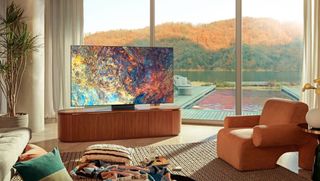
1. Samsung QN95A Neo QLED TV
Specifications
Reasons to buy
Reasons to avoid
All things being equal, this is the one we’d choose. Its Mini LED configuration (which the company insists on calling Neo QLED), along with Samsung’s picture-quality smarts, make it a straightforward treat to watch. It has quite a capable audio system by prevailing standards. Its response times with next-gen consoles are comfortable below 10m/s. It’s fitted with Samsung’s anti-glare layer to minimise reflectivity. And its Tizen Smart TV interface remains one of the very best around.
Thanks to a chassis that’s a consistent (and extremely skinny) 25mm deep, it sits pretty much flush to the wall when it’s mounted there. And thanks to Samsung’s brilliant One Connect box, all connectivity requirements – including mains power – are off-board. So once the screen is on the wall, there’s only one slim cable to be concealed.
Those of you in the US will have to make do with the QN90A, though, which doesn’t come with the One Connect box. Still, it’s a strong choice to put up on your wall.
Read our Samsung QN95A review

2. LG G1 Gallery Series
Specifications
Reasons to buy
Reasons to avoid
How wall-hangable is the LG G1 Gallery Series OLED TV? Well, it doesn’t come supplied with any feet – which tells you a lot. But then when you realise it’s actually less than 20mm deep, it’s almost compulsory to hang the G1 on the wall anyway – which is why, we suppose, LG decided to go with the name ‘Gallery Series’ in the first place.
When it’s hung up, the G1 basically becomes part of the wall. It’s a more reflective screen than some, though, so be careful about which bit of wall you put it on – because after that, all the news is good.
Pictures are bright, detailed, high-contrast and describe motion really well. There’s a full suite of next-gen console compatibility on board, sound is on the right side of ‘passable’ (though low frequencies go astray somewhat), and the screen’s capabilities are so impressive that you’ll be quickly ignoring the well-designed exterior either way.
Read our LG G1 OLED review
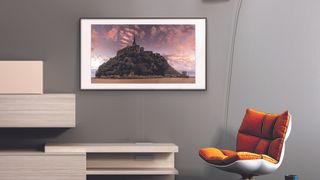
3. Samsung The Frame
Specifications
Reasons to buy
Reasons to avoid
What happens when designers get to make a start on a TV before the engineers? The Frame is what happens. Here’s a TV that’s meant to look good on the wall, even when it’s not switched on.
So you get a huge choice of screen-sizes, almost as wide a choice of differently coloured bezels that are simple to change, and a big selection of artwork, wallpapers and screensavers the TV can display while it’s not being, you know, a television. It’ll even display your own selection of photographs if you prefer.
Because the engineers didn’t get there first, The Frame is a good TV rather than a great one. Its images aren’t the brightest around, and its colour-balance isn’t the most natural you’ve ever seen. But it’s nevertheless good to watch, with plenty of detail in its images and nice, stable motion-handling. In Tizen it has one of the better operating systems. But, most of all, it’s the only screen here that genuinely looks good when it’s switched off.
Read our Samsung The Frame review
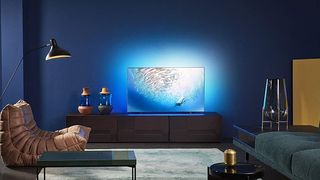
4. Philips OLED 805 (UK)
Specifications
Reasons to buy
Reasons to avoid
There are very few USPs (unique selling points) in the TV market – but Philips certainly has one, and it’s one that really lends itself to wall-hanging your TV. We’re talking, of course, about Ambilight.
The OLED 805 has a series of LEDs on its back panel, which beam light onto the wall – either recreating on-screen colors or emitting a set tonal backdrop. It sounds like a gimmick, but works brilliantly – images appear larger than they are, the sensation of being immersed by the picture is greater, and eye-strain is reduced. It’s an all-around win.
Elsewhere, the Philips veers between ‘good’ and ‘great’. At 58mm it’s far from the slimmest screen here, though it’s not the worst out there either. Its picture quality (after you’ve set it up satisfactorily) is great, with contrasts, motion handling and detail levels all impressing. Having every HDR format on board should be standard, but isn’t elsewhere – so that’s another thing in Philips’ favor.
Read our Philips OLED 805 review
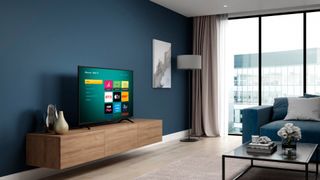
5. Hisense A7200 Roku TV (UK)
Specifications
Reasons to buy
Reasons to avoid
Somehow, Hisense manages to match parts of the performance of far more expensive options while only charging a fraction of the price. Keep this fact uppermost in your mind and the A7200G makes a whole lot of sense.
These aren’t the brightest images you ever saw, and in a screen that’s over 8cm deep they’re coming from one of the chunkier chassis currently in manufacture. But balance this against the very stable, coherent and convincing 4K images it can deliver, the wide contrasts of which it’s capable despite the relatively low peak brightness, and then take the outstanding Roku smart TV interface into account too. And then check the price again, because there’s no more affordable way of putting a nice new TV up on your wall.
Read our Hisense A7200 review
- How to wall-mount TVs: a step-by-step guide
Get daily insight, inspiration and deals in your inbox
Sign up for breaking news, reviews, opinion, top tech deals, and more.
Simon Lucas is a senior editorial professional with deep experience of print/digital publishing and the consumer electronics landscape. Based in Brighton, Simon worked at TechRadar's sister site What HiFi? for a number of years, as both a features editor and a digital editor, before embarking on a career in freelance consultancy, content creation, and journalism for some of the biggest brands and publications in the world.
With enormous expertise in all things home entertainment, Simon reviews everything from turntables to soundbars for TechRadar, and also likes to dip his toes into longform features and buying guides. His bylines include GQ, The Guardian, Hi-Fi+, Metro, The Observer, Pocket Lint, Shortlist, Stuff T3, Tom's Guide, Trusted Reviews, and more.

